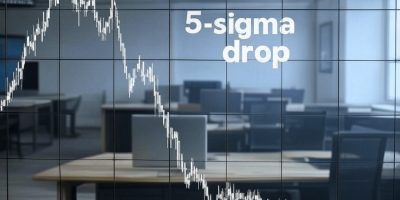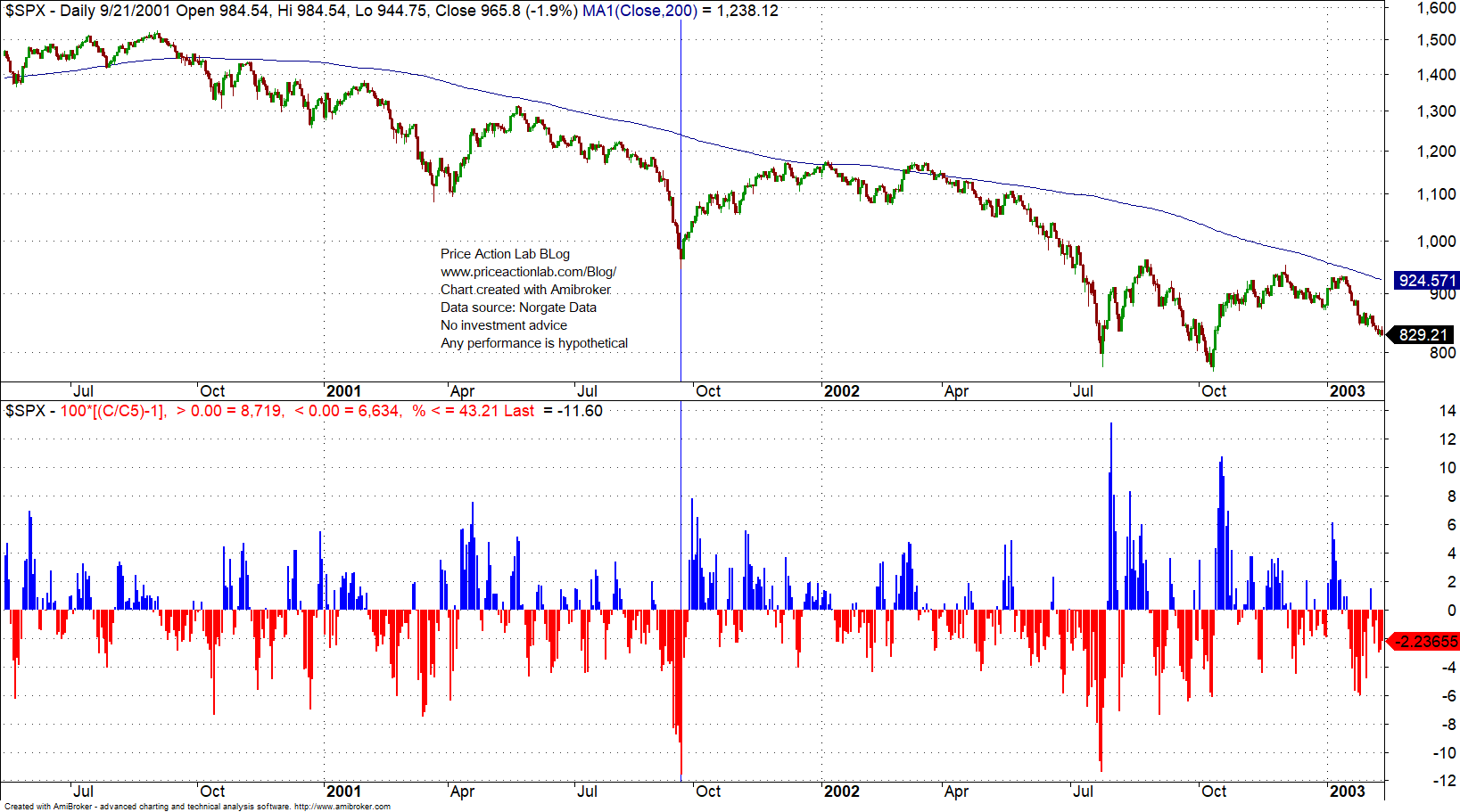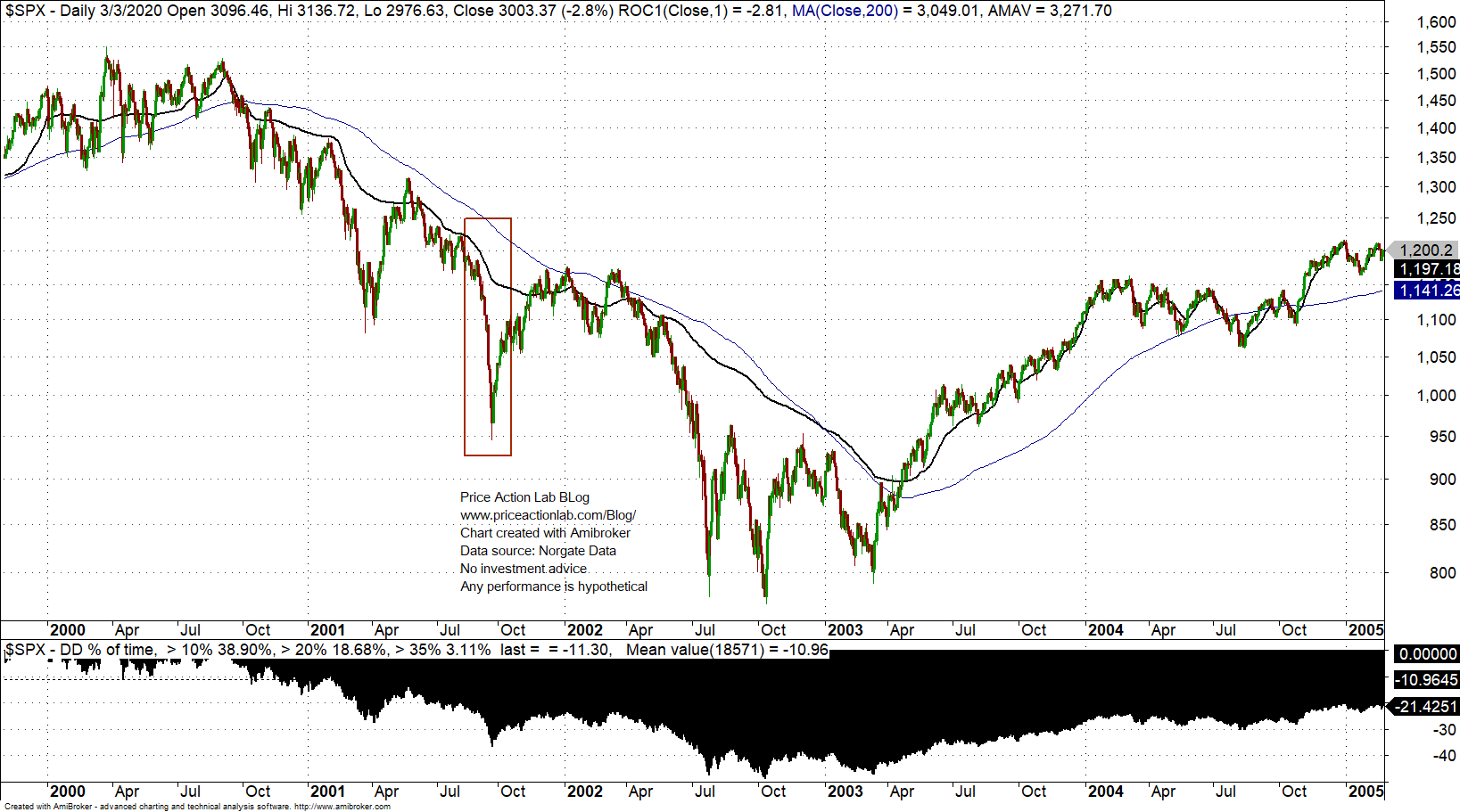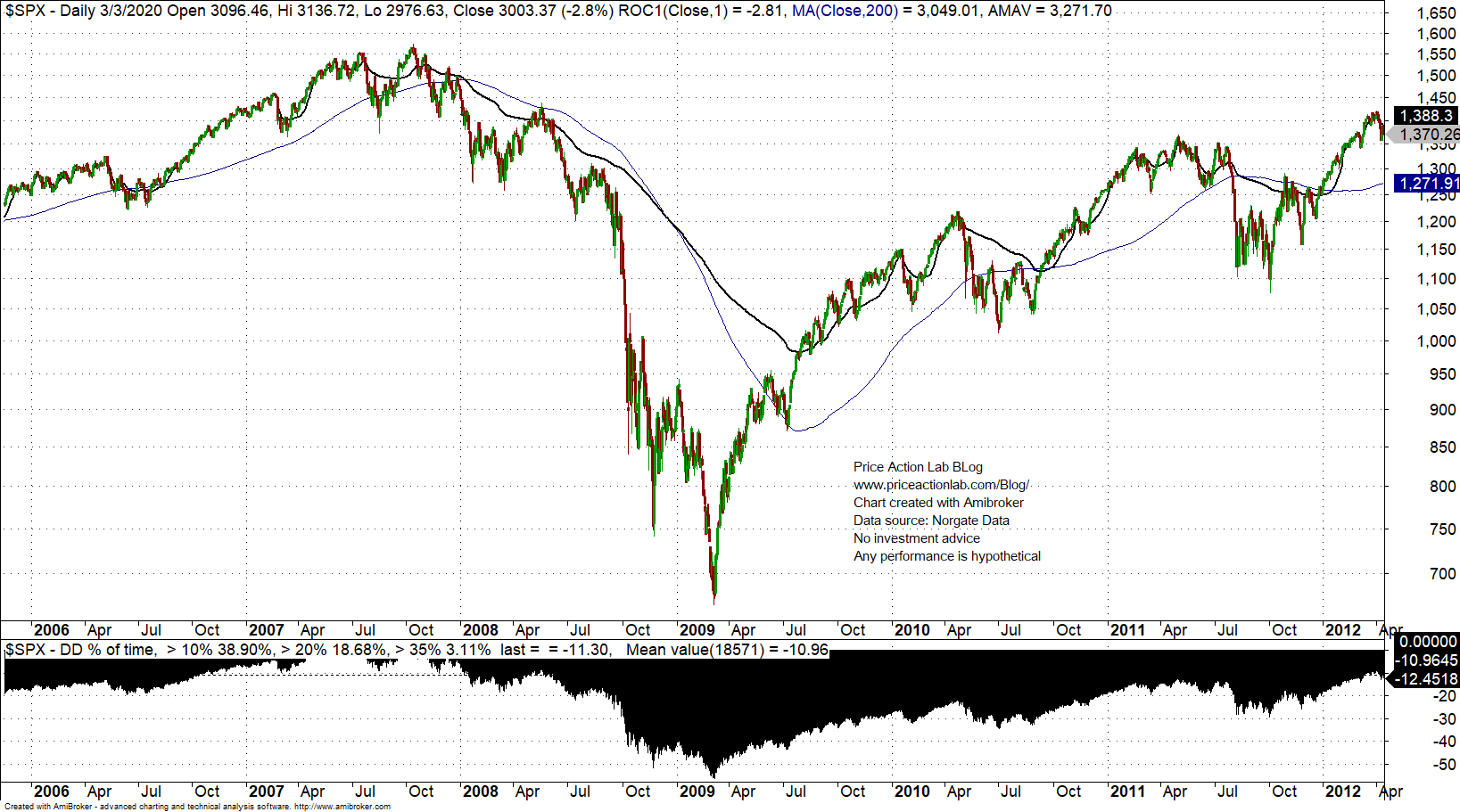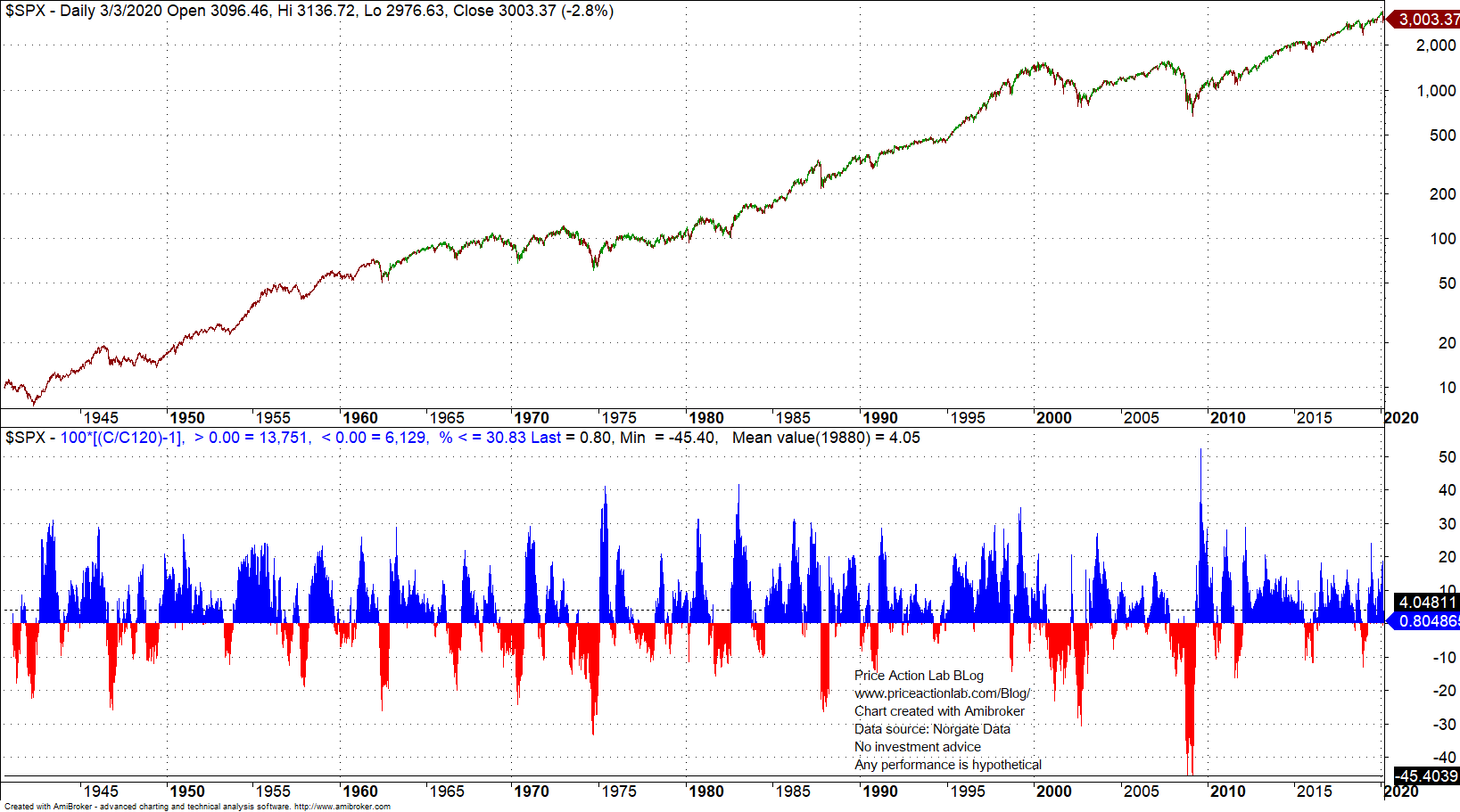Passive investors in stock market without any diversification or hedge, and even traders, are risking uncle point in equity markets in the current environment.
The question is: How do you measure risk? This is the 42 million dollar question.
How far can the stock market fall in a day, week, month, or in the next X days?
Will those with no diversification or hedge be willing to average down to recover at some point, assuming there will be a recovery, or will they sell everything in a state of panic, as many did during dot com, financial crisis, or even after the 1987 crash?
I am not talking here about unhedged leveraged long bets in the stock market. Those positions may be wiped out completely if there is a day or few days with a very large loss, depending on leverage of course. For example, if the market drops 50% in a month, leveraged positions at 200% will be wiped out.
The market can also drop a lot on a single day. Level 3 circuit breaker is at 20%. In case such an extreme situation occurs, what is next? Are they going to close markets down for a few days as they did in 9/11?
As the chart above shows, by September 21, 2001, the market was down 12%. Then, despite a rebound for a few months, the bear market resumed. People had lost confidence already. It was not only the dot com crash but the 9/11 black swan that amplified fears. By October 2002, the market was down 50% from previous all-time highs.
Then, the financial crisis came with a repeat but in higher speed; the market dropped more than 55% in about 12 months.
Although the market cannot go down more than 20% in a day as in 1987 due to circuit breakers and procedures, it can do that in a few days after it reopens unless it is closed down.
A closed market is equivalent to total loss.
Therefore, they will have to open the market eventually and the rout may continue if conditions remain in place.
So what is the risk of loss now? There are many ways to measure risk.
During quiet times (remember 2017) mean absolute deviation (MAD) may be a good measure of risk. This is also called the L1 norm in mathematics or the Manhattan distance. You average the absolute deviations from the mean in the timeframe of interest and that is the risk.
During normal volatility times, standard deviation may be a good measure of risk. This is also called the L2 norm in mathematics or the Euclidean distance. You average the squared deviations from the mean in the timeframe of interest and then you take the square root of that.
The L1 and L2 norms are just two special cases of the general Ln norm. As n goes to infinity, you get the Chebyshev distance, which is the max/min absolute deviation. Therefore, during times of high turmoil, the risk in the timeframe of interest may be measured by the max/min absolute mean deviation.
Let us look at an example below for a 6-month period (about 120 days.)
The largest negative 120-day return is about 45%. The mean is about 4%. Then the minimum MAD is about 41%. This is the risk in 120 days under conditions of turmoil.
Risk is dynamic and changes depending on conditions. Different risk metrics apply under different circumstances. There is also risk in applying risk. In fact, the largest risk of outperformance is due to wrong application of risk, i.e., reducing risk during favorable conditions and increasing during unfavorable.
Then, there is also the more serious possibility that we have no sufficient sample and the potential minimum 120-day return in the above chart is not -45% but something like -60% or more. This is why hedging or proper diversification is of paramount importance. But the passive indexing industry has enforced S&P 500 total return as the benchmark and prudent fund managers that hedge or diversify get penalized despite the hard lessons of passive investors in 2003 and 2008.
Risk is a difficult subject, because risk affects reward.
Charting and backtesting program: Amibroker
Data provider: Norgate Data
Technical and quantitative analysis of major stock indexes and 34 popular ETFs are included in our Weekly Premium Reports. Market signals for position traders are offered by our premium Market Signals service
If you found this article interesting, you may follow this blog via RSS or Email, or in Twitter
